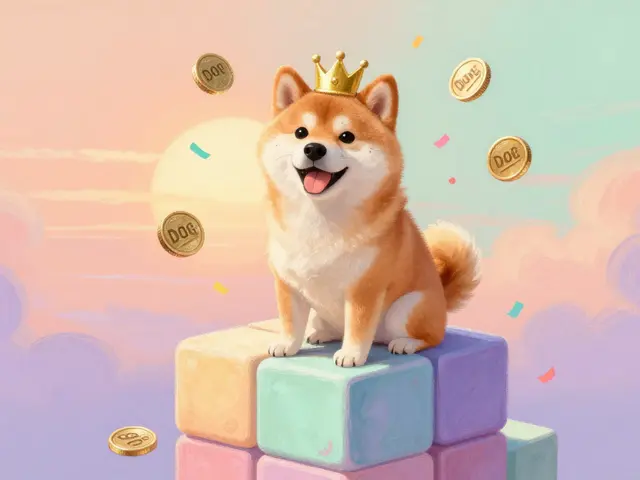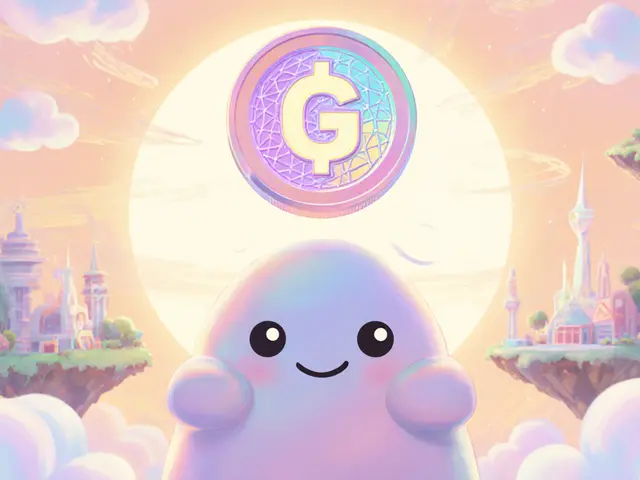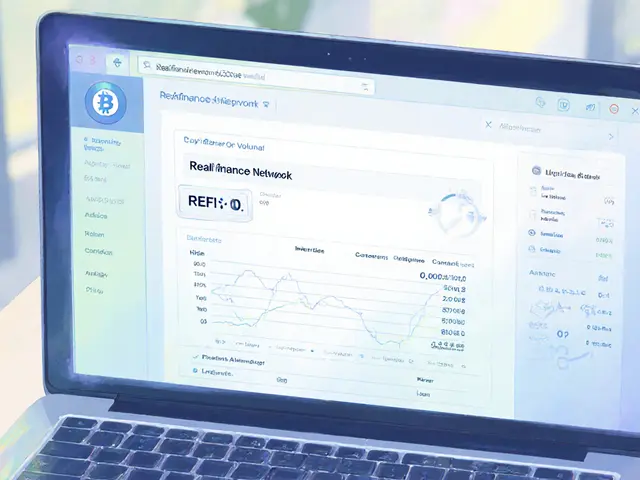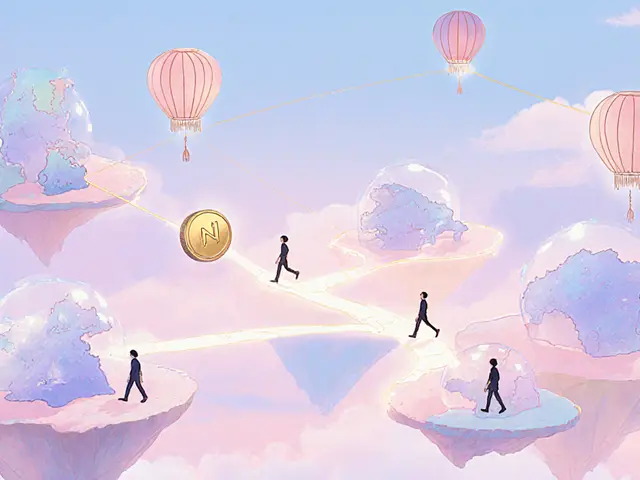Gooeys (GOO) Crypto Coin Explained

GOO Token Price Tracker
Gooeys (GOO)
Utility Token on Polygon
Token Performance Analysis
Price Movement
GOO has experienced a dramatic 99.84% drop since its all-time high in June 2022.
Liquidity Status
Low liquidity pools make trading challenging with potential slippage above 10%.
Risk Factors
- Liquidity Risk High
- Tokenomics Opacity Medium
- Technical Promise High
Compare GOO with Major Gaming Tokens
| Metric | GOO (Gooeys) | AXS (Axie Infinity) | SAND (The Sandbox) | MANA (Decentraland) |
|---|---|---|---|---|
| Blockchain | Polygon | Ethereum (Ronin) | Ethereum (Polygon) | Ethereum |
| Token Type | ERC-20 Utility | ERC-20 Governance | ERC-20 Utility | ERC-20 Utility |
| All-Time High | $0.000949 | $166.00 | $2.70 | $3.20 |
| Current Price | $0.0000016 | $5.30 | $0.60 | $0.70 |
| Market Cap | ~$0.5M | $1.2B | $900M | $1.0B |
If you’ve ever browsed the Play‑to‑Earn (P2E) scene and wondered what the hype around Gooeys is all about, you’re in the right place. This guide breaks down the GOO token - from its purpose in the Gooeys game to its technical backbone, market reality, and where you can actually get your hands on it.
What is the Gooeys (GOO) token?
Gooeys (GOO) is a utility token that powers the Play‑to‑Earn blockchain game created by Dogira Studios. The token lives on the Polygon network as an ERC‑20 asset, meaning it inherits low‑cost, fast transactions while staying compatible with Ethereum’s tooling. In the Gooeys ecosystem, GOO serves three core roles: reward players for completing quests, enable the purchase of in‑game NFTs, and act as the settlement medium for the game’s marketplace.
The game itself is fully tokenized - every character, weapon, or treasure is an on‑chain NFT that can be bought, sold, or traded on platforms like OpenSea. By integrating the token directly into gameplay, Dogira Studios aims to give players a genuine stake in the virtual world.
How GOO works inside the game
Gooeys follows the classic Play‑to‑Earn loop: you log in, complete a quest, and the smart contract hands you a chunk of GOO. The amount you earn depends on the quest difficulty, the rarity of the NFT you’re hunting, and a random‑ness factor powered by Chainlink VRF (Verifiable Random Function). Chainlink VRF injects provably fair randomness directly on‑chain, so nobody can rig loot drops or character generation.
- Earning GOO: Daily quests, PvP battles, and NFT breeding all generate token rewards.
- Spending GOO: Use tokens to mint new character NFTs, upgrade gear, or enter premium tournaments.
- Trading GOO: Players can list their NFTs on secondary markets, receiving GOO from buyers, which they can then withdraw or reinvest.
Because every asset is an NFT, ownership never leaves the blockchain. That means you can walk away from the game, move your wallet to another platform, and still retain full control of every character or item you’ve earned.
Technical specifications and the Polygon advantage
Gooeys (GOO) is an ERC‑20 token deployed on Polygon’s sidechain. Polygon offers two big benefits for a game like this:
- Polygon processes transactions in a few seconds, keeping gameplay smooth.
- Gas fees are typically a fraction of a cent, so players aren’t discouraged by pricey Ethereum fees when they mint or trade NFTs.
The smart contract also incorporates Chainlink VRF, which adds a cryptographic proof for every random event. In practice, when a loot chest opens, the contract requests a random number from Chainlink; the response includes a proof that the number wasn’t tampered with. This transparency is rare in traditional gaming and gives players confidence that the odds are real.
Current market performance
As of October 2025, GOO trades somewhere between $0.00000151 and $0.0000018 per token. That’s a stark 99.84% drop from its all‑time high of $0.000949 recorded in June 2022. Volume is scrawny - roughly $1.5million spread across 24‑hour trades - and the token sits around rank #7060 on CoinMarketCap. Some data aggregators even list the circulating supply as zero, hinting at possible reporting issues.
Despite the price slide, the token showed a modest 3.3% uptick in the last 24hours on CoinGecko, while Coinbase’s limited data showed a 0.02% dip. Weekly moves remain modest, with a 1.36% decline over the past seven days. The low liquidity means even tiny buy‑ or sell‑orders can swing the price dramatically.

Where to buy GOO and liquidity hurdles
Gooeys is not listed on major centralized exchanges like Coinbase or Binance. It does appear on a handful of smaller decentralized exchanges (DEXs) that operate on Polygon, and there are occasional listings on platforms like KuCoin, though the exact pairs are inconsistent. Because liquidity pools are shallow, you’ll likely face slippage above 10% for any sizable purchase.
To acquire GOO, follow these steps:
- Set up a Polygon‑compatible wallet (MetaMask, Trust Wallet, or Coinbase Wallet).
- Buy MATIC (Polygon’s native gas token) on a major exchange and bridge it to your wallet.
- Connect to a DEX that lists GOO - for example, QuickSwap or SushiSwap on Polygon.
- Swap a small amount of MATIC for GOO, adjusting slippage tolerance to at least 15% to ensure execution.
After the swap, you’ll need to add the GOO contract address to your wallet manually if it doesn’t appear automatically.
How GOO stacks up against other gaming tokens
| Metric | GOO (Gooeys) | AXS (Axie Infinity) | SAND (The Sandbox) | MANA (Decentraland) |
|---|---|---|---|---|
| Blockchain | Polygon | Ethereum (Ronin sidechain) | Ethereum (Polygon bridge) | Ethereum |
| Token Type | ERC‑20 Utility | ERC‑20 Governance | ERC‑20 Utility | ERC‑20 Utility |
| All‑time High (USD) | $0.000949 (2022‑06) | $166.00 (2021‑11) | $2.70 (2021‑11) | $3.20 (2021‑11) |
| Current Price (USD) | $0.0000016 (2025‑10) | $5.30 (2025‑10) | $0.60 (2025‑10) | $0.70 (2025‑10) |
| Market Cap | ~$0.5M (est.) | $1.2B | $900M | $1.0B |
| Key Advantage | Full on‑chain NFT integration + Chainlink VRF | Largest player base, strong ecosystem | Robust creator tools, metaverse focus | Virtual land ownership, social experiences |
| Major Risk | Very low liquidity, unclear tokenomics | Economic model stress, high entry cost | Metaverse hype volatility | Land price bubbles |
While GOO offers cutting‑edge on‑chain fairness, it pales in scale compared to the majors. The table highlights why GOO is considered a niche play‑to‑earn token - its price is minuscule, market cap tiny, and exchange access limited.
Risks, opportunities, and who should care
Investing or playing Gooeys comes with a clear risk‑reward profile.
- Liquidity risk: Shallow pools mean you could lose a large chunk of value simply trying to sell.
- Tokenomics opacity: Inconsistent circulating‑supply data makes it hard to gauge dilution.
- Technical promise: Chainlink VRF & Polygon integration are solid, offering a strong foundation for future upgrades.
- Speculative upside: The current price is so low that even modest adoption could trigger a 100‑plus‑fold price jump.
The token is best suited for two kinds of people:
- Gamers who love experimenting with fully on‑chain NFTs and don’t mind a steep learning curve.
- High‑risk crypto enthusiasts seeking a cheap entry point into a project with innovative tech.
If you’re looking for a stable store of value or a mainstream gaming experience, the established giants (AXS, SAND, MANA) are safer bets.
Future outlook for Gooeys
Dogira Studios’ roadmap hints at expanding the Gooeys universe, adding cross‑game NFT bridges and deeper staking mechanisms for GOO. Success hinges on a few pivotal factors:
- Community growth: More players mean more transaction volume, which gradually improves liquidity.
- Partnerships within Polygon: Integrations with other Polygon games could drive utility and demand.
- Transparency: Publishing clear supply metrics and regular code audits would boost investor confidence.
Until those milestones materialize, GOO remains a high‑risk, low‑cap token that appeals mainly to niche gamers and speculative traders.
Frequently Asked Questions
What blockchain does GOO run on?
GOO is an ERC‑20 token deployed on the Polygon network, benefiting from low fees and fast confirmation times.
How can I earn GOO in the game?
Players earn GOO by completing daily quests, winning PvP battles, breeding NFTs, and participating in random‑reward events that use Chainlink VRF for fairness.
Where can I buy GOO?
GOO is not on major exchanges. You’ll need to use Polygon‑based DEXs like QuickSwap or SushiSwap, swapping MATIC for GOO. Always set a high slippage tolerance due to low liquidity.
Is GOO a good investment?
GOO is high‑risk. Its price is extremely low and liquidity scarce, but the tech (Chainlink VRF, full on‑chain NFTs) could attract a niche community. Treat it as speculative, not a core holding.
What are the main competitors of GOO?
The biggest rivals are Axie Infinity’s AXS, The Sandbox’s SAND, and Decentraland’s MANA. Those tokens have larger markets, broader adoption, and more exchange listings.








Gooeys might look like a tiny player in the P2E arena, but its use of Chainlink VRF gives it a credibility edge. The low fees on Polygon keep the gameplay smooth, which is essential for user retention. If the community can rally around the token, we could see a modest liquidity bump soon. Keep an eye on the roadmap; the upcoming cross‑game bridges could be a game‑changer.
Another token hype cycle? Sure, but GOO's price dip feels like a meme stock all over again 😂
From a rigorously analytical perspective, the GOO token exhibits classic symptoms of an illiquid micro‑cap: price volatility disproportionate to trading volume, and opaque supply metrics. The reliance on Polygon does mitigate transaction costs, yet it does not address the fundamental demand deficit. Moreover, the token’s governance structure remains undefined, which raises concerns about future protocol upgrades. Investors should demand transparent tokenomics before allocating capital.
Let’s break down the tokenomics stack: GOO operates on an ERC‑20 framework, leverages Polygon’s L2 scalability, and integrates Chainlink VRF for provable randomness. Those primitives form a solid technical foundation, but the liquidity depth is currently a red flag. If you’re stacking the deck with NFTs, focus on utility‑driven demand to buoy the token’s market cap. In other words, drive in‑game activity to generate organic buy pressure.
When I first stumbled upon Gooeys, I felt the familiar spark of a frontier opportunity that tech enthusiasts chase with unbridled zeal. The fact that the game lives entirely on-chain means every asset you acquire is truly yours, a concept that still feels revolutionary in 2025. Chainlink VRF injects a cryptographic layer of fairness, so players can trust that loot drops aren’t being rigged by a hidden hand. This sheer transparency fuels community confidence, a priceless commodity in the murky waters of crypto gaming. Yet, the promise remains shackled by the stark reality of its market cap-half a million dollars is a drop in the ocean compared to the billions backing rivals like AXS or SAND. Liquidity, unfortunately, mirrors this disparity; even modest trades cause price slippage that would make a seasoned trader wince. The token’s circulating supply ambiguity further muddies the water, as investors cannot accurately gauge dilution risk. Still, the developers have charted an ambitious roadmap, envisioning cross‑game NFT bridges that could summon a wave of cross‑project utility. If that vision materializes, the token could experience exponential demand spikes, potentially catapulting its valuation. In the meantime, early adopters who have the patience to ride the volatility can reap outsized rewards, provided they diversify and hedge against the downside. Moreover, the low transaction fees on Polygon lower the barrier to entry, inviting a broader demographic of gamers to experiment without the dread of costly gas fees. Community engagement will be the linchpin; active Discord channels, regular in‑game events, and transparent audits can gradually build the trust needed for sustainable growth. While I remain cautiously optimistic, I caution newcomers to allocate only what they can afford to lose, as the speculative nature of micro‑caps is unforgiving. Ultimately, Gooeys stands at a crossroads: either it will capitalize on its technical merits to carve a niche, or it will fade into the countless forgotten tokens littering the blockchain ether. I’ll be watching the next quarterly update with bated breath, hoping for the former.
Gooeys token has potential but you need to watch liquidity and supply data
It is clear that projects like GOO, built on foreign chains, are attempts to siphon talent away from our domestic blockchain initiatives. The lack of transparency is intentional, meant to undermine local confidence. Until these tokens adopt strict governance and open audits, they remain a hazard to our digital sovereignty.
from where i sit the token seems like a niche experiment its low price is interesting but the real test will be if players actually use it in the game i guess time will tell
Honestly, the whole concept of Gooeys feels like a kaleidoscope of ambition and uncertainty, swirling together in a way that could either mesmerize or bewilder the uninitiated. The token’s minuscule price point is alluring, like finding a hidden gem in a thrift store, yet the surrounding market volatility is a thunderstorm you can’t ignore. On one hand, the integration of Chainlink VRF paints a picture of fairness and technical sophistication that any serious gamer should admire. On the other, the shallow liquidity pools act like a fragile glass floor-one misstep and the token could plummet dramatically. I find myself torn between the excitement of pioneering a fully on-chain gaming ecosystem and the pragmatic need for solid, transparent tokenomics. If the developers can bridge the current gaps-especially by clarifying circulating supply and fostering stronger exchange listings-I believe the community could generate organic demand that lifts the token out of obscurity. Until then, I’d advise prospective participants to dip their toes in gradually, perhaps allocating a modest portion of their portfolio, while keeping a vigilant eye on volume spikes and community sentiment. After all, in the volatile world of crypto, patience and due diligence are often the most valuable assets you can hold.
The GOO token’s utility layer is technically sound-leveraging ERC‑20 standards and Polygon’s L2 scaling-yet the market micro‑cap dynamics suggest a high beta profile 📈. Without deeper liquidity pools, any sizable order will experience slippage, which could deter serious investors. It’s a classic case of robust tech meeting thin market depth; bridging that gap will be crucial for sustainable growth.
In the grand theater of speculative assets, GOO stands as a fleeting apparition, whispering promises of on‑chain fairness while the shadows of ill‑liquidity loom large. One must ask whether the fleeting thrill of potential gains outweighs the existential dread of inevitable decay.
Gooeys is nothing but a glorified pump‑and‑dump scheme.
Hey there! I get why GOO can seem risky, but remember that early adopters often reap the biggest rewards when a project finally gains traction 🌟. Keep an eye on community updates and maybe start with a tiny amount to test the waters.
The tokenomics are garbage, the roadmap is vague, and the community is barely a whisper. It’s a textbook example of hype masquerading as innovation.
When we contemplate the rise of niche tokens like GOO, we must consider not only the technology but the cultural narrative that fuels them. They are mirrors reflecting our collective desire for ownership in virtual realms, yet they also reveal the fragility of value when detached from broader economic foundations.
One must duly acknowledge that the purported merits of the GOO token are, in essence, a superficial veneer overlaying a paucity of substantive utility. The token’s meager market capitalization precludes it from any meaningful participation within the echelon of established digital assets.
Don't let the noise get you down-if you're into gaming and crypto, give Gooeys a shot, but play it smart. Start small, learn the ropes, and you might just find a hidden gem.
Honestly, I think GOO is overrated.
Everyone has valid points-some see potential, others see risk. At the end of the day, it's about personal risk tolerance and staying informed.